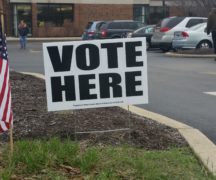The power of our vote is undeniable, yet many Ohioans do not take advantage of this right. Of the approximately 9.2 million eligible voters in Ohio, 86.8% are registered. However, in the 2023 election, only 49.63% of registered voters cast their ballots, meaning just 43.12% of the eligible population made decisions for everyone. This low turnout raises crucial questions about voter participation.
Why do so many people choose not to vote or register? Some may feel uninformed or believe that their vote doesn’t matter. Others might be too busy or unsure about the voting process. It’s difficult for me to understand this reluctance as I couldn’t wait to cast my first vote when I turned 18. Throughout history people have been arrested, beaten, and lost their lives in their fight for voting rights. For them, I never take that right and privilege for granted.
Our democracy is built on the foundation of voting. Initially, voting rights were restricted to White men who owned property. It wasn’t until the 15th Amendment in 1870 that voting rights were theoretically extended to all men, regardless of race. The 19th Amendment in 1920 finally granted women the right to vote, though it initially only applied to White women. Significant progress came with the Voting Rights Act of 1965, which banned literacy tests, poll taxes, and other discriminatory practices that had long suppressed minority voting.
Casting a ballot is not just a right but a powerful tool that influences governance, policies, and community services. Politicians strive to limit voting access because they understand the impact of every single vote. Recent narratives suggesting that elections are unfair or that fraud is rampant are not supported by evidence. For instance, in the 2020 presidential election in Ohio, out of nearly 6 million votes, only 27 were deemed illegal, a rate of around 0.0005%. Allegations of non-citizens voting have proven to be unfounded, often involving newly naturalized citizens. As a poll worker, I’ve witnessed firsthand the rigorous security measures in place to ensure election integrity.
Despite these facts, Ohio legislators are pushing bills that further restrict voting access, such as prohibiting outdoor absentee ballot receptacles (S.B. 184) and requiring voter IDs to match current appearances (H.B. 472). These measures threaten to complicate the voting process and disenfranchise voters. We have the power to vote out the legislators proposing these measures.
If you haven’t registered to vote, the deadline in Ohio is October 7th. Early voting starts on October 8th, and Election Day is November 5th. Make sure you bring an unexpired Ohio Driver’s License, State ID, or passport to the polls. For unbiased information on candidates and issues, visit www.Vote411.org.
Shar Katzner
Bowling Green





